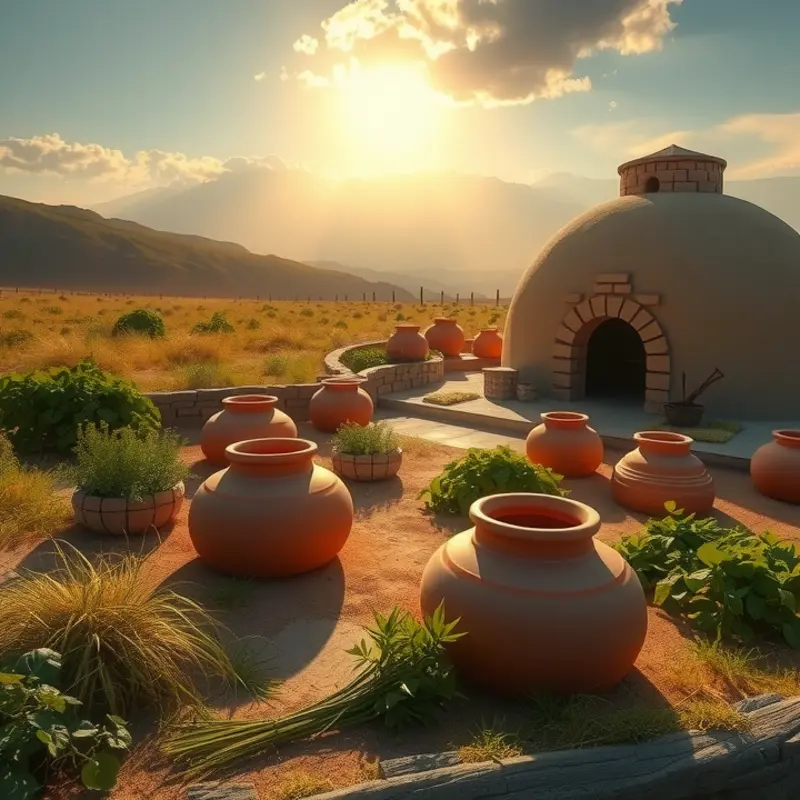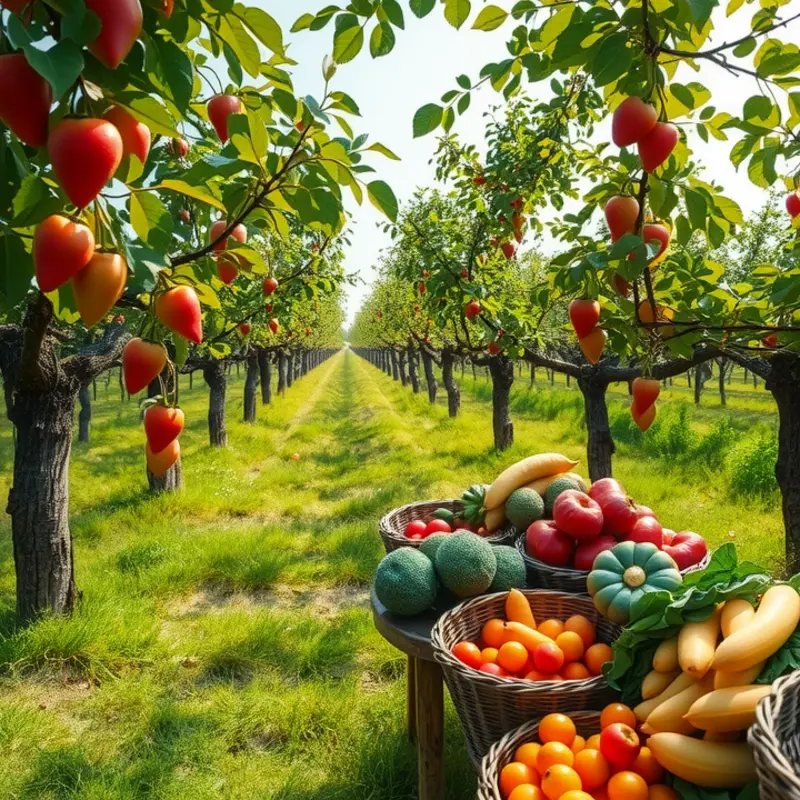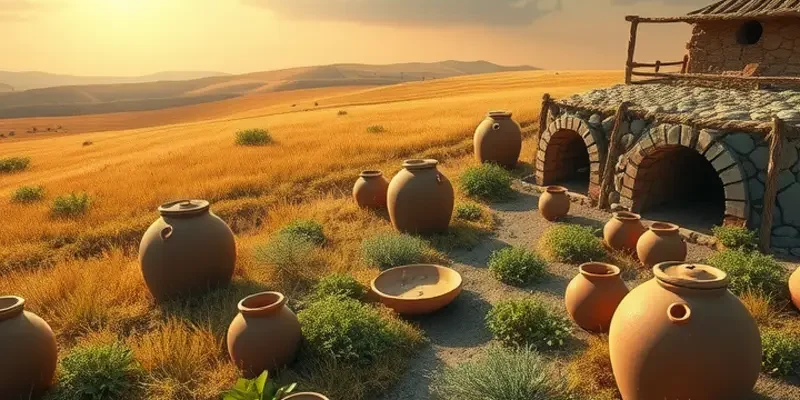The rich tapestry of culinary history weaves together various ancient cooking methods, reflecting the cultural nuances and environmental contexts of different regions. These time-honored techniques not only highlight the ingenuity of our ancestors but also inspire modern chefs seeking authenticity and depth in flavors. From the sun-baked ovens of the Mediterranean to the smoke-filled kitchens of Asia, discovering these ancient practices reveals the essence of humanity’s relationship with food—a relationship that transcends time and borders.
Fire and Earth: The Origins of Cooking

Fire, the primal element, serves as the origin of cooking methods that date back to our ancestors. From the first spark that struck the Earth, humanity discovered the ability to transform raw ingredients into sustenance. This transformation fostered not only survival but also the evolution of cultures worldwide.
The simplest technique, pit cooking, harnessed both fire and earth. Across continents, indigenous peoples dug pits and filled them with burning coals or heated stones. Over this heat source, they placed food wrapped in leaves, clay, or even directly into the embers. In the Pacific Islands, the umu or earth oven became a cornerstone of communal feasts, encapsulating the spirits of the gathered community. In North America, the indigenous peoples practiced similar methods, often using stones to retain and evenly distribute heat.
The use of heated stones extended to methods such as hot stone baking, a practice prevalent among early nomadic tribes. On the Scandinavian tundra, stones heated by fire provided a platform to bake thin breads. This technique preserved staples like fish or game, ensuring that communities could thrive in unforgiving environments.
Just as stones harness fire’s energy, clay opened new possibilities in cooking. Early humans shaped clay into pots, enabling them to boil water and concoct stews. This innovation nurtured the significant expansion of cooking methods, influencing many ancient cultures. For example, the pot-au-feu method in ancient Europe showcased a direct descendant of this development. Sixty thousand years ago, during the Middle Pleistocene, the use of fire-altered stone suggests our ancestors’ shift towards more complex cooking methods. The role of clay in everyday life extended beyond sustenance, embedding itself in cultural rituals.
Cooking did not just sustain life; it evolved as a means to bring communities together. Feasts around fire were opportunities for storytelling and cultural exchange. The communal nature of these ancient cooking methods encouraged the gathering of tribes, shaping social structures in the process. In many cultures, food and cooking became intertwined with spiritual practices, marking important ceremonies.
Today, the influence of these ancient techniques still echoes in modern cuisines. Many global dishes reflect the ingenuity of fire and earth methods, from tandoor baked breads in India to the fiery barbecues of the American South. Understanding these roots deepens our appreciation of the culinary arts and provides insight into how ancient techniques continue to flavor our meals.
For those looking to explore these ancient methods in modern kitchens, consider the importance of mindful ingredient selection and eco-friendly practices. Hughes’s blog offers practical advice on maintaining an eco-smart kitchen storage approach, aligning with the sustainable principles these ancient techniques championed.
Through fire and earth, the origins of cooking laid the groundwork for what would become an essential part of human culture. As we journey through culinary history, we uncover not just the methods but the profound impact these practices have had on our lives.
Steaming and Smoking: The Art of Flavor

Steaming and smoking are ancient culinary techniques that have transcended time and geography, each providing unique flavor profiles and preservation benefits to foods. In China, the art of steaming has been perfected over centuries, where bamboo steamers are woven into the fabric of its culinary traditions. By trapping steam in a confined space, these devices gently cook food, preserving delicate textures and nutrients. The famous dumplings and buns, known as baozi and jiaozi, emerge with a tender bite thanks to this meticulous process. The steamer’s gentle heat enhances the subtle flavors of ingredients, allowing natural aromas and tastes to shine without overpowering seasonings.
The practice of smoking food has its origins correlated with preservation, used by cultures from the Americas to Scandinavia. In the American South, smokehouses have long been a staple. This technique not only extends the longevity of meats but imbues them with rich, complex flavors. Woods like hickory and mesquite impart distinct aromas that are synonymous with Southern barbecue. Here, smoking is not merely a cooking process but a cultural ceremony that brings communities together around the warmth and scent of smoldering coals.
Across the Nordic countries, smoking becomes an art form within itself. Scandinavian families traditionally gathered to smoke fish caught during the bountiful warmer months, using alder wood to give a signature earthy sweetness. This practice not only preserved fish for the harsh winters but also developed a classic culinary tradition with global admirers.
In exploring these age-old methods, we see how each culture has adapted smoking and steaming to fit their environment and resources. In the Pacific Islands, for example, the earth oven imu has served as a communal centerpiece for steaming meats and vegetables, utilizing volcanic stones and banana leaves to impart a subtle flavor unlike any other. The interplay of heat and moisture breaks down fibers in a way that accentuates the natural essence of the ingredients.
Modern chefs draw inspiration from these methods to craft innovative dishes that resonate with contemporary palates. The principles behind steaming and smoking—to enhance rather than overshadow—remain steadfast anchors in the culinary arts. By employing tools like sous-vide machines or portable smokers, culinary professionals expand upon traditional techniques to create dishes that continue to surprise and delight.
As we celebrate these methods’ enduring legacy, we find they are more than just cooking styles. They are cultural time capsules, offering a glimpse into the storied past and the diverse landscapes that shaped them. To delve deeper into how global cuisines are influenced by ancient techniques, explore our comprehensive guide on global culinary influences.
Final words
The ancient cooking methods explored in this article illuminate the creativity and resourcefulness of diverse cultures throughout history. Each technique, whether born from necessity or tradition, contributes to the intricate narrative of human culinary evolution. As modern food enthusiasts, we can carry forward these age-old practices, blending them with contemporary techniques to enrich our own culinary experiences. By understanding and appreciating these heritage methods, we not only celebrate the meals of our ancestors but also foster a deeper connection to the natural world and the ingredients it offers.








